
|
| Illustration: Cindy Lou Scrivner |
An ecologist strives to revise Darwin's theory of sexual selection. Laura Poppick explores the evolution of this new view. Illustrated by Cindy Lou Scrivner.
As the sun rises on a damp California winter morning, Lynn Zhang dips a brush into yellow acrylic paint. The scent of eucalyptus trees thickens the air as sunlight glows through dewy leaves. Her field partner, Theadora Block, and I are the only other humans awake in the arboretum at UC Santa Cruz. The animal world sings with morning gossip.
Amidst the calls and shrills, Zhang pulls a golden-crowned sparrow from a white cotton bag and holds the bird with its head poking out between her thumb and forefinger. With her free hand, she strokes the wet paintbrush bristles through a patch of yellow feathers on top of its head. “We used a spectrophotometer to match the color exactly to its patch,” she tells me.
Zhang places the painted bird in an aviary with an unpainted, smaller-patched sparrow. She then straps on binoculars, joins Block about 30 yards away, and observes how the sparrows interact as they flick around a pile of seeds. She and Block want to know whether the brighter patch improves the sparrow’s competitive edge for food.
“The studlier ones” — with the bigger, brighter patches — “tend to be more aggressive,” Zhang says.
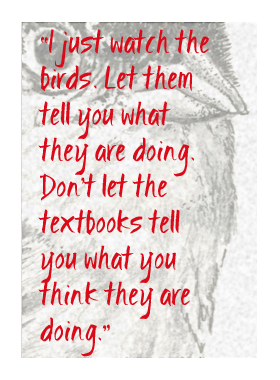 Zhang and Block work as undergraduate research assistants with biologist Bruce Lyon to determine how sparrows use these golden crowns in social interactions. Lyon has conducted such animal behavioral studies for more than 20 years, trying to decode the evolutionary advantages of showy traits. He and others in the field are now shifting the foundations laid more than 150 years ago by luminary Charles Darwin. Zhang and Block work as undergraduate research assistants with biologist Bruce Lyon to determine how sparrows use these golden crowns in social interactions. Lyon has conducted such animal behavioral studies for more than 20 years, trying to decode the evolutionary advantages of showy traits. He and others in the field are now shifting the foundations laid more than 150 years ago by luminary Charles Darwin.
“Darwin was not wrong,” Lyon says. “He just focused on a very narrow subset.” That focus, Lyon claims, pushed Darwin toward one main purpose for showy traits: sex. In his theory of sexual selection, Darwin argued that decorative traits evolved to help animals attract and compete for mates, but not much else.
Now, Lyon’s studies have helped explain some quirks that Darwin could not rationalize with his theory — “peculiarities” that did not seem related to mating. To distinguish these traits from those involved in sexual selection, Lyon and colleagues have advocated for a separate but complementary selection category, called social selection.
Social selection, their argument goes, takes place when individuals compete for resources other than mates. Food, space, or nesting materials all fall into this broad category. By opening up this world of platonic animal interactions, Lyon hopes to help evolutionary biologists widen their view on ornamental traits and discover more nuanced behaviors beyond mating. But the proposal has raised eyebrows among researchers who aren’t yet willing to meddle with Darwin’s legacy.
The social world of animals
Darwin first sketched out his theory of sexual selection in the bible of evolutionary biology, On the Origin of Species.
“Thus it is, as I believe,” Darwin wrote, “that when the males and females of any animal have the same general habits of life, but differ in structure, colour, or ornament, such differences have been mainly caused by sexual selection.”
Darwin did not rule out other explanations. He qualified his simplification with the following passage: “Yet, I would not wish to attribute all such sexual differences to this agency. . . for we see peculiarities which we cannot believe to be either useful to male in battle or attractive to females.”
Such unexplained oddities in the animal kingdom have long fascinated Lyon. Birds, in particular, have been on Lyon’s brain since childhood. “I just liked finding nests; I didn’t actually like bird watching,” he says. “My dad was pretty fascinated with nests when he was a kid, too. It’s probably a genetic mutation.”
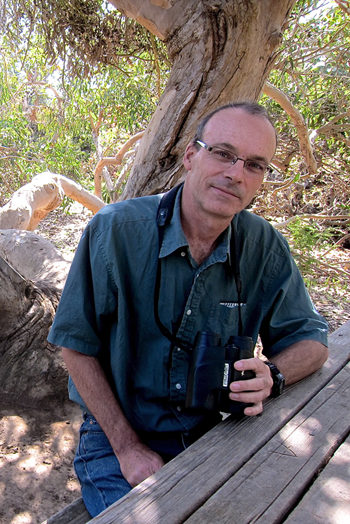 Photo: Laura Poppick Photo: Laura Poppick
|
Evolutionary biologist Bruce Lyon in the UC Santa Cruz Arboretum. |
|
|
This early captivation evolved into an interest in photography as a teenager. Lyon traveled with his camera to the tropics, stunned by the diversity of shapes and colors in animals, and even toyed with the idea of a photography career. But film and lenses came second to his interest in natural history.
Lyon’s camera-trained eyes have since led to groundbreaking discoveries in animal behavior. In 2003, Lyon found that female American coots — a common North American waterbird — count the eggs in their nests to distinguish their own eggs from impostor eggs planted by other females, the first evidence that birds can count in the field. In 2008, Lyon and his graduate student, Alexis Chaine, showed that female lark buntings change their plumage preferences in mates from year to year. Until then, biologists had assumed that females chose the same traits each mating season. These results, among others, helped earn Lyon induction as a Fellow in the California Academy of Sciences in 2010.
Social selection crept into Lyon’s research when he was a master’s student at Queen’s University in Ontario, Canada, in the early 1980s. During a weekly meeting with his lab group to discuss recent academic publications, he came across a paper by ecologist Mary Jane West-Eberhard from the Smithsonian Tropical Research Institute. West-Eberhard called for the need to categorize traits that did not fall under sexual selection. “I read it and just thought, ‘Yeah, that makes perfect sense,’” says Lyon.
Ten years later, while mucking around swamps in British Columbia, Lyon came across what he thought was a perfect illustration of West-Eberhard’s argument: a baby American coot. “It was this fluorescent orange thing running around, and I knew enough natural history to know that babies were supposed to be camouflaged,” he says. “I thought, ‘Holy crap, that is pretty interesting.’”
 Soon after, Lyon and colleagues launched a study of these funky coot chick feathers. He found that the coot mothers, who ration most of their meals to one or two favorite chicks, preferred those with more ornately colored plumage. Through a social interaction traditionally associated with mating — attracting attention via vibrant plumage — these chicks competed for food. They lost their colorful plumage after just three weeks, well before sexual maturity. The physical trait had nothing to do with mating, Lyon showed. Soon after, Lyon and colleagues launched a study of these funky coot chick feathers. He found that the coot mothers, who ration most of their meals to one or two favorite chicks, preferred those with more ornately colored plumage. Through a social interaction traditionally associated with mating — attracting attention via vibrant plumage — these chicks competed for food. They lost their colorful plumage after just three weeks, well before sexual maturity. The physical trait had nothing to do with mating, Lyon showed.
Lyon praised West-Eberhard’s work when he described the coot chicks at a conference. “I started the whole talk by whining about how West-Eberhard has all these great ideas, but no one has tested them, so here is a test,” he says. Lyon had never met West-Eberhard, so he didn’t realize she was sitting in the front row. She approached him after he spoke. “The whole [talk] had been gushing about her theory,” he says. “We’ve been on good terms ever since.”
But that was the early 1990s. Social selection still has not received the attention Lyon believes it deserves.
Social pressure
In part, social selection’s struggle stems from the social climate of the U.S. in the mid-1970s, when West-Eberhard first presented the theory. Social liberals were fuming about the emerging field of sociobiology, which explores how social behaviors might result from genetics rather than from one’s upbringing or environment. Opponents of this “genetic determinism” feared scientists would use it to justify eugenics. In fact, 33 states had established eugenics boards. They were actively sterilizing members of society deemed socially problematic, such as criminals and those with low IQs.
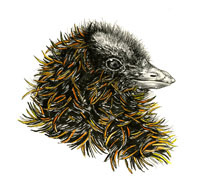 When West-Eberhard presented social selection at a symposium in Washington, D.C., tension from leftist protesters filled the building. Students threw water on Harvard University biologist Edward O. Wilson, who had just published Sociobiology: The New Synthesis. Wilson is still known as the father of this controversial field. When West-Eberhard presented social selection at a symposium in Washington, D.C., tension from leftist protesters filled the building. Students threw water on Harvard University biologist Edward O. Wilson, who had just published Sociobiology: The New Synthesis. Wilson is still known as the father of this controversial field.
“I’m not a genetic determinist,” says West-Eberhard. “I’ve proven that with an 800-page book on phenotypes.” She believes that both genes and the environment affect physical traits and social behavior in animals. Eugenics had no place in her research.
Still, a sociologist approached West-Eberhard after her talk and said she really should not use the term “social selection.” It was offensive, he warned. As a result, she downplayed the term.
“If I had featured it more, it might have caught on,” she says. “But all you have to do is say the wrong word, and you’re out. I didn’t want to take on that fight at the time.” And when it didn’t catch on, West-Eberhard had picked up new projects at the University of Costa Rica, where she still holds an office today.
So when Lyon lauded her paper at his conference, the theory had been buried under a decade of newer academic findings. Evolutionary biologists were not compelled to dust it off. Now, two additional decades after West-Eberhard’s original paper, many researchers still overlook it and revert back to sexual selection in Darwin’s way.
“People use sexual selection sloppily,” Lyon says. “They go, ‘Oh they have these ornaments, they must be sexually selected,’ jump to conclusions about what’s being fought over, and have no idea what is driving the evolution.”
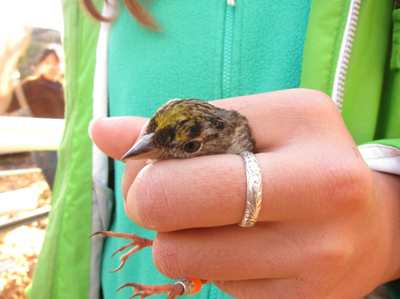 |
| In this narrated slideshow, Laura Poppick visits with two undergraduate students studying the dynamics of bird behavior at the UC Santa Cruz Arboretum. The research is part of a UCSC biologist's investigation into "social selection." (Click image to launch slideshow.) |
|
|
Birds but no bees
Papers published by evolutionary biologist Tim Clutton-Brock of Cambridge University in 2007 and 2009 motivated Lyon to take action. Clutton-Brock acknowledged the shortcomings of the traditional theory of sexual selection, but he still lumped all ornaments under a blanket term of “secondary sexual characters.” These traits might not be directly linked to mating, Clutton-Brock argued. They could be used to get other resources, such as food or nesting. But these other competitions ultimately circled back to reproductive success and thus belonged within one umbrella theory, he maintained. “That was the stimulus for me to say, ‘Okay, I should get off my butt and write about this,’” says Lyon.
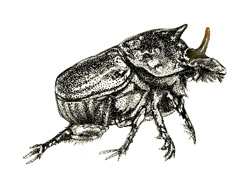 In 2012, Lyon published two prominent papers on social selection. He and his colleagues presented examples of non-sexual showy traits across the animal kingdom. Coauthor Bob Montgomerie, an evolutionary biologist at Queen’s University, thinks the coot chick study most clearly illustrates their argument. “If you describe the coot babies without saying what they are, it sounds just like sexual selection,” he says. In 2012, Lyon published two prominent papers on social selection. He and his colleagues presented examples of non-sexual showy traits across the animal kingdom. Coauthor Bob Montgomerie, an evolutionary biologist at Queen’s University, thinks the coot chick study most clearly illustrates their argument. “If you describe the coot babies without saying what they are, it sounds just like sexual selection,” he says.
The team’s other examples of social selection extended to insects, amphibians and mammals. Females in a certain species of lizard, for example, turn bright colors after mating, in a reverse of Darwin’s theory. Researchers believe this helps them ward off sexual harassment by signaling to lurking males that they are no longer fertilizable. Similarly, some female damselflies adapt showy coloring that closely resembles male markings, fooling other males. Since mating is time-intensive — lasting up to three hours — these male-mimickers might save energy and live stronger lives by mating less.
Lyon’s painted sparrow study at UC Santa Cruz provides another example of trait-driven social interactions. He conducts this research in the winter, when food is at the fore of the birds’ brains, not sex. Sparrows with duller patches don’t bother to fight birds with studlier patches, the results show. The patches allow birds to judge one another from a distance rather than jumping straight into unevenly matched competition. Mating isn’t a factor.
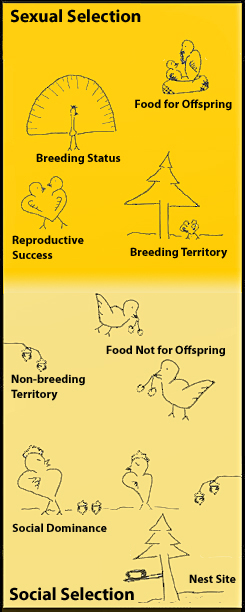 Graphic: Laura Poppick Graphic: Laura Poppick
|
|
|
Lyon and his colleagues use all of these scenarios to claim that the lines between classic sexual selection and social selection are often blurred. The new theory does not reject the old, Lyon argues. Rather, both should coexist as nested layers within the larger theory of natural selection.
“It’s all semantics,” he says. “If we didn’t have the term ‘sexual selection’ and just asked, ‘What are the various things that drive male and female ornamentation?’, that would be fine. But we have Darwin’s legacy.”
Will social selection take flight?
West-Eberhard thinks Lyon might give her theory another chance. State eugenics boards fizzled out in the early 1980s, and “social selection” no longer carries as much baggage. “Times change, and so what you can say changes,” she says.
But not everyone is ready to adapt. Tim Clutton-Brock, well respected among evolutionary biologists, contests Lyon’s take on social selection. He agrees with the general biology behind it, but he dislikes the way Lyon has organized its framework. “The categories are so bloody complicated that nobody is going to remember them,” he says.
Clutton-Brock worries that labeling a given trait ‘sexual selection’ in males and ‘social selection’ in females of the same species — which occurs within Lyon’s framework — will be too difficult to rationalize across many species. “Do you really want to say that a big black stripe on a male [bird] is partly a consequence of non-sexual social selection, and partly a consequence of sexual social selection?” he says. “Sounds like a can of worms to me.”
But Montgomerie says Clutton-Brock is overreacting. “I could present this to undergraduates in a way that would make perfect sense to them and [would be] in line with their textbooks,” Montgomerie says. “I think Clutton-Brock thinks that we are kind of on a campaign to overturn the way things are done, and that is far from the truth. This is not a revolutionary way of looking at things. It is just a different way of looking at things.”
When pressed, Clutton-Brock contends that West-Eberhard’s theory of social selection does carry some weight. But he would rather limit the discussion to the idea of social competition, and not extend it to fabricating an entirely new category of selection.
Montgomerie and Lyon worry about the consequences. Lumping traits within sexual selection that have no direct bearing on mating may dumb down future studies in animal behavior, they say. “I admire a lot of [Clutton-Brock’s] work,” says Lyon. “I just don’t think he has thought through what people who aren’t as smart as him will do with what he is proposing.” If less-experienced evolutionary biologists do not notice the nuances of Clutton-Brock’s sexual selection, he says, every bright feather and every horn might falsely connote just one thing.
Technology and Darwin’s legacy
Such semantic debates are natural in academia. They take time to unfold, and sometimes they fizzle before disturbing deep foundations. Meanwhile, technology rattles the base of those foundations. For instance, Darwin knew nothing of DNA. Now, scientists can parse single strands to understand the genetic code behind the ways animals look.
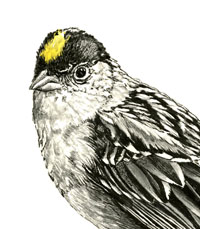 Biologist Dai Shizuka, who earned his Ph.D. under Lyon and now works at the University of Nebraska, is developing tools to determine the sex of birds through their DNA. Such techniques will help decode social interactions among species in which males and females look the same. Biologist Dai Shizuka, who earned his Ph.D. under Lyon and now works at the University of Nebraska, is developing tools to determine the sex of birds through their DNA. Such techniques will help decode social interactions among species in which males and females look the same.
“We’ve reached a point where the bottleneck is really in terms of processing the data,” says Shizuka. “It’s not a problem to generate the sequences. The bigger problem is, you have so much data that you need computer scientists to help figure out what is useful.”
Still, Lyon and West-Eberhard agree that technology will only get us so far. At the end of the day, good old-fashioned looking might still work best.
“People confuse the power of the techniques with the power of the science, and they are not always the same,” says Lyon. “When I first start a study, I just watch the birds. Let them tell you what they are doing. Don’t let the textbooks tell you what you think they are doing.”
Story ©2013 by Laura Poppick. For reproduction requests, contact the Science Communication Program office.
Top
Biographies
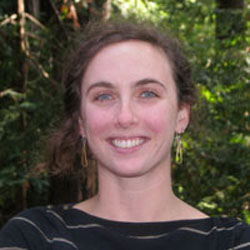 Laura Poppick Laura Poppick
B.S. (geology) Bates College
Internship: LiveScience.com (New York)
I sympathize with people who find rocks boring, because they used to bore me, too. Geology called to me because I cared about the environment, not rocks. I loved water, mud, the homes of living things—but not cold, lifeless rocks.
Hundreds of rocks later, I changed. As I worked in Australia, North America, and the Arctic, I found entire eras bound in rocks. I didn’t care any less about mud and water, but rocks throbbed with stories of past environments. Fieldwork revealed more stories emerging from unexpected places, including dust and even septic tanks.
Science is energizing, and science writing gives me space to explore and share that buzz. If people find rocks boring or septic tanks simple, I want to change their minds. This challenge now energizes me more than science itself.
Laura Poppick web site
. . . . . . . . . . . . . . . . . . . . . . . . . . . . . . . . . . . . . . . . . . . . . . . . . . .
 Cindy Lou Scrivner Cindy Lou Scrivner
B.S. (biology) University of Colorado at Denver
M.A. (illustration) Savannah College of Art and Design
Internship: Department of Paleobotany, Denver Museum of Nature and Science
I have always been in awe of the beauty of nature and how the natural world functions around us. I love the solid logic of science and the creative freedom of visual art. Scientific illustration combines my two loves into a rewarding and challenging career. I enjoy using various illustration techniques, design elements, and typography to convey visual ideas, theories, and stories. To create powerful images that portray, explain or define an aspect of nature is a special privilege I am grateful to have. Watercolor is by far my favorite medium, and it lends itself well to my fascination with capturing botanical subject matter.
Cindy Lou Scrivner web site
Top |

